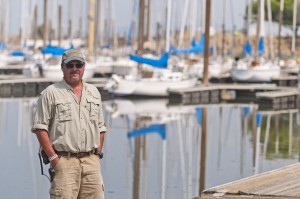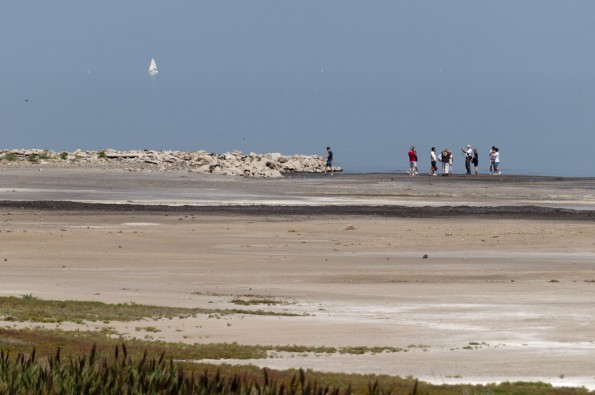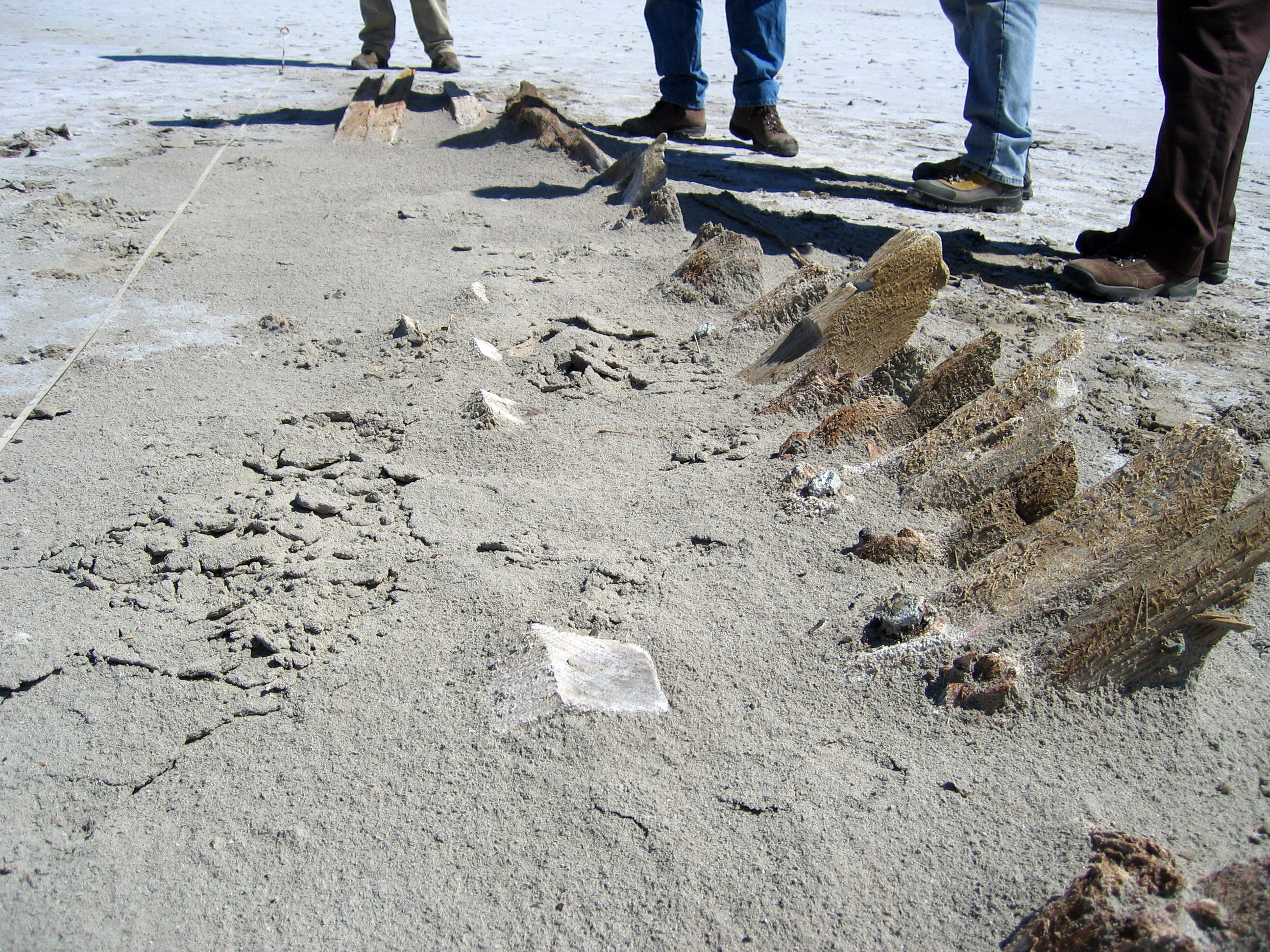
It’s the worst of times. It’s the best of times. We are suffering a severe drought, we are suffering from torrential rains. While this weird weather is somewhat common in Utah, really weird weather especially causes one man terrible grief. But the nonchalant harbormaster for Great Salt Lake, Dave Shearer, doesn’t seem to sweat it too much.
Ninety days ago, Shearer was warning the GSL yacht club boat owners that they’d better prepare to remove their boats because the lake was reaching record-low levels. Now, after 40 days of record rains, he’s not worried boats will get stuck in mud, but that maybe Noah of the Wasatch Front should maybe start building his ark. Lake Bonneville is returning. Well, not quite.
“The biggest factor is Mother Nature,” said Dave Shearer, harbormaster for 16 years at the lake. As harbormaster, he is the general overseer of the marina, so he knows A LOT about Great Salt Lake. “The GSL is 50 percent runoff and 50 percent precipitation.” The runoff that causes the lake to rise in the spring is a direct result of the weather the GSL helps create for the mountains in the winter. It’s a bit of a vicious circle.
Also 90 days ago, The Washington Post and Reuters reported how the Great Salt Lake was going to reach a 50-year low level. Now our water situation has been much improved. But these rains have been the terrible for the organizers of Speed Week. The event which draws over 80,000 spectators and participants to the west desert has been cancelled.
According to Shearer, “The ski industry is very reliant on the Great Salt Lake. The whole Wasatch Front is reliant on it too for its drinking water.” Shearer says the lake level is several years behind what happens in the watershed that feeds back into the lake.

All the ski areas in northern Utah are directly connected to the Great Salt Lake water level and the effect it has on early winter storms that provide the snow base for the entire ski season. Shearer says the cold fronts from the northwest roar into Utah over the GSL which is still relatively warm in the late fall.
Even though northern Utah’s last winter was 124 percent of normal snow depth in the mountains, very little of that runoff made it to the GSL. The two prior winters were so far below normal, the parched reservoirs and water tables sucked up almost all of the 2013-4 winter snows. “We are at the end of the line.”
In an average year the GSL covers an area of around 1,700 square miles but the lake’s size fluctuates substantially due to its shallowness. In 1963 it reached its lowest recorded level at 950 square miles. On the other end of the spectrum, in 1988, the surface area was at the historic high of 3,300 square miles. In surface area, the GSL is the largest lake in the United States that is not part of the Great Lakes. At its deepest point, near the Union Pacific Railroad causeway, the lake is only 33 feet deep.
Shearer says the marina is normally around 13.5’ feet deep during August, the middle of the sailing season. In mid-August 2014 the marina was at 5 feet. To give you an idea of the current drought trend, as late as 1999 the marina was at a healthy 15 feet.
In July, Shearer sent out dire emails to GSL boat owners strongly suggesting they remove their boats from the Antelope Island marina before the lake stranded them in its muck. A second warning went out for the Great Salt Lake Marina. Twenty boat owners had their boats removed the first week in August to take advantage of a crane scheduled on site to remove them.
Radical GSL water levels and shore fluctuations are nothing new. The State of Utah and the United States federal government went all the way to the US Supreme Court in 1969 over a dispute as to which of them had jurisdiction over the lake and its mineral wealth exposed by the ever-changing shoreline. The State of Utah won, says Shearer, based upon a photograph from the late 1800’s, showing a state-owned boat on the lake.

“The GSL is technically an inland sea. It even has its own reef,” says Shearer. “One good thing, the lake’s giving up some of its secrets.” These are mysteries it reveals from its 14 feet of sediment. The wreck of Brigham Young’s boat, the Timely Gull, which sank in 1847, is once again exposed off of the southern tip of Antelope Island. And Shearer says they also found the remains of the W E Marsh #4, a San Francisco launch, one of the Southern Pacific Railroad fleet, which disappeared in 1936.
According to the Reuters report: 70 boats have been removed from the 320-slip marina and USGS records show Great Salt Lake water levels dropping about 1.5 feet annually over the past three years. If winter fails to bring above-average snowfall, that pattern is likely to continue.
According to a KUER public radio report “Scientists at the Utah Climate Center say this is probably just the beginning of a downward trend for the Great Salt Lake. After studying wet-and-dry cycles going back over a thousand years, they are projecting that the lake could slump another five feet over the next five years.”
Shearer is less sensational in his assessment, “No real trend here. It all depends on the storm cycles. I have been studying this lake for a long time. I have even found news articles from the 1880’s that predicted the lake would dry up due to water diversion by the Mormon Pioneers. Didn’t happen.” “In 2014 we saw a very rare phenomenon. The lake actually came up 2/10ths of a foot in August. In short, the lake goes down, the lake goes up.”







